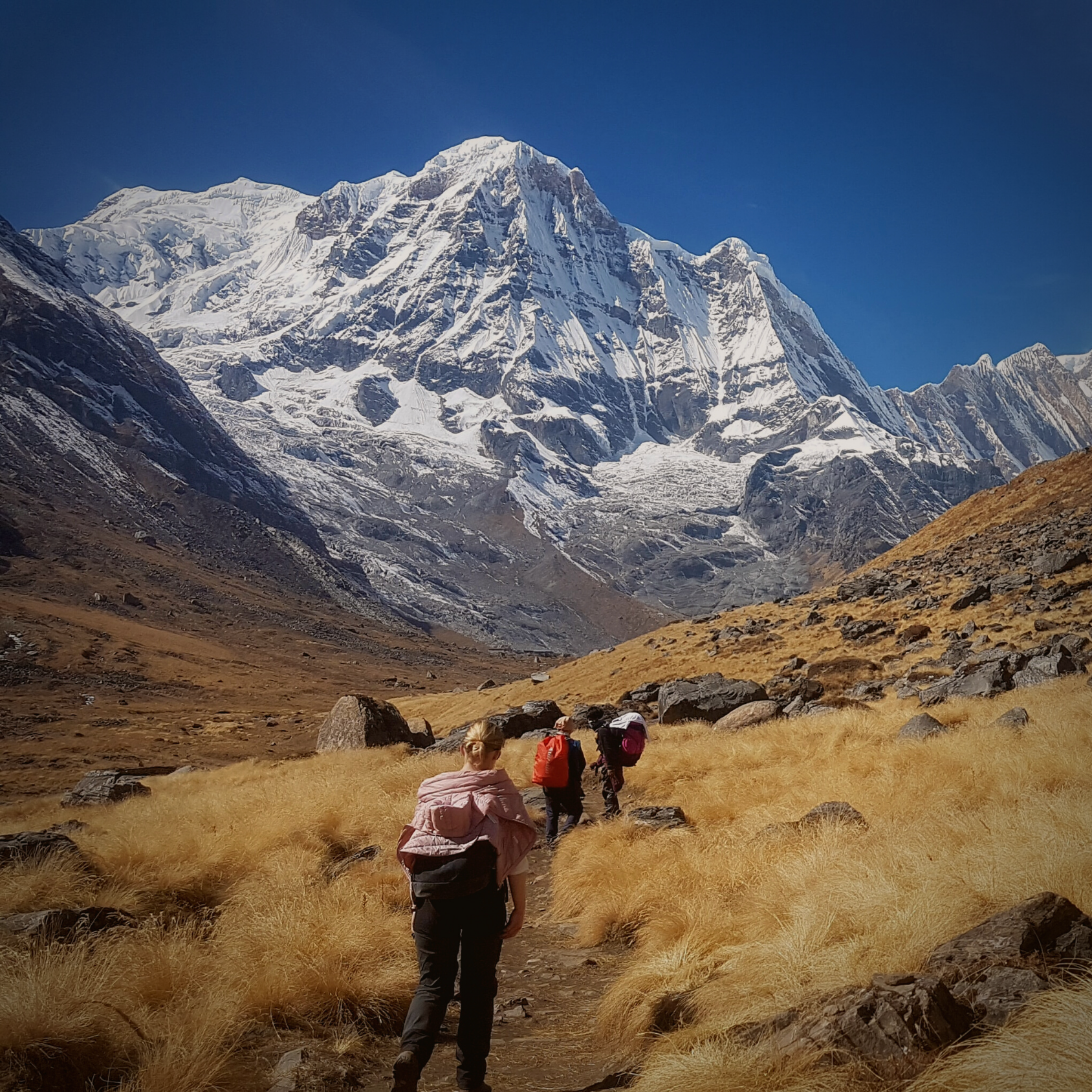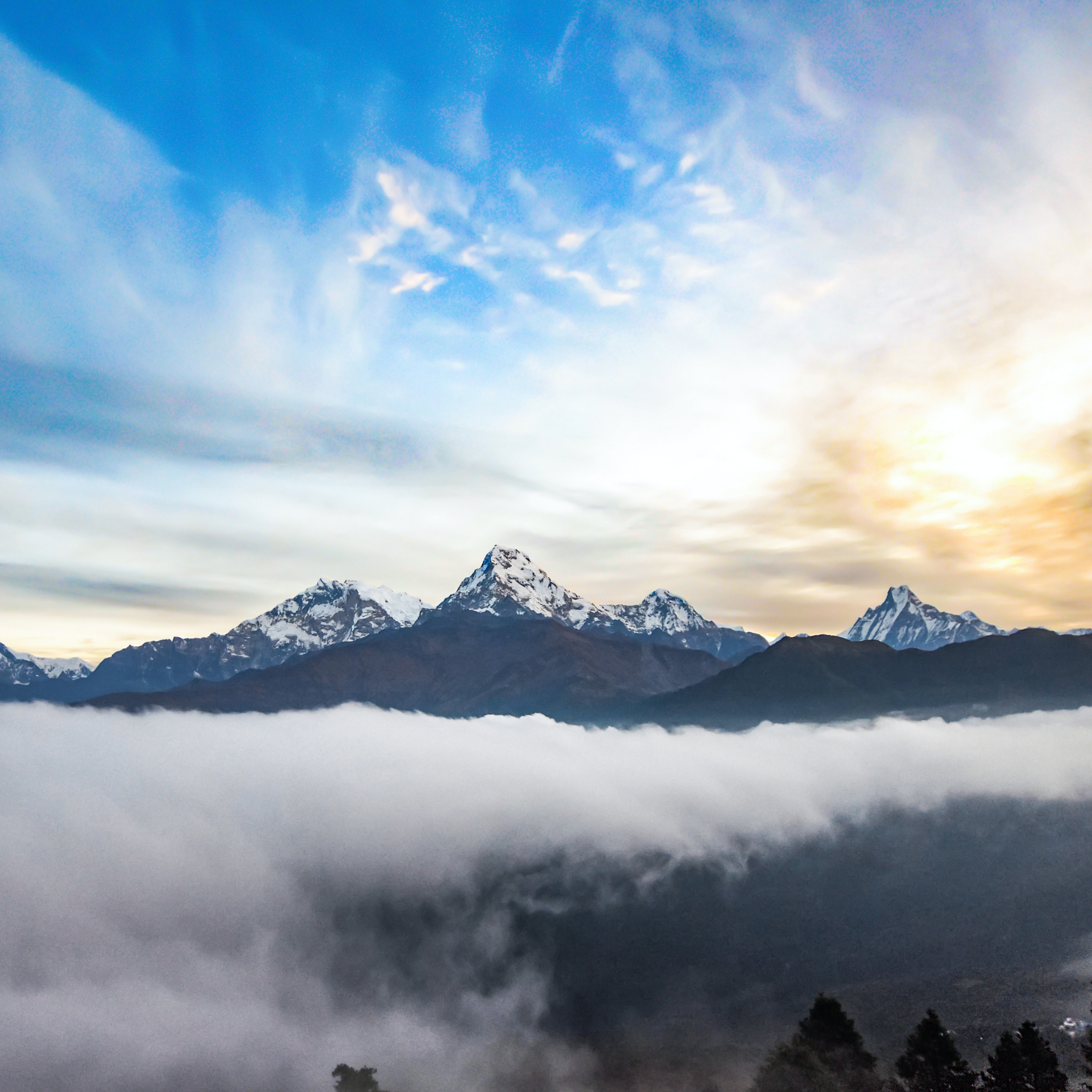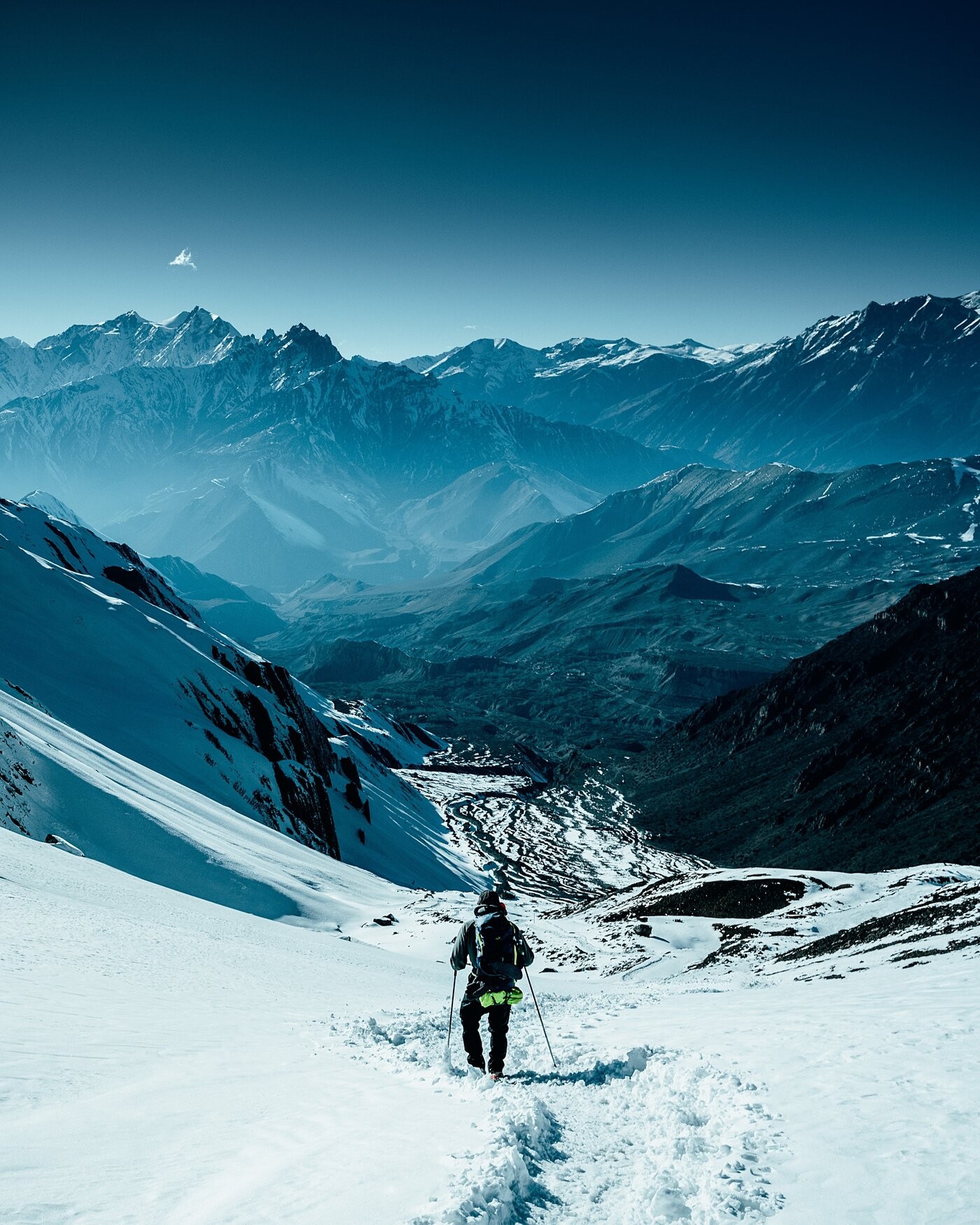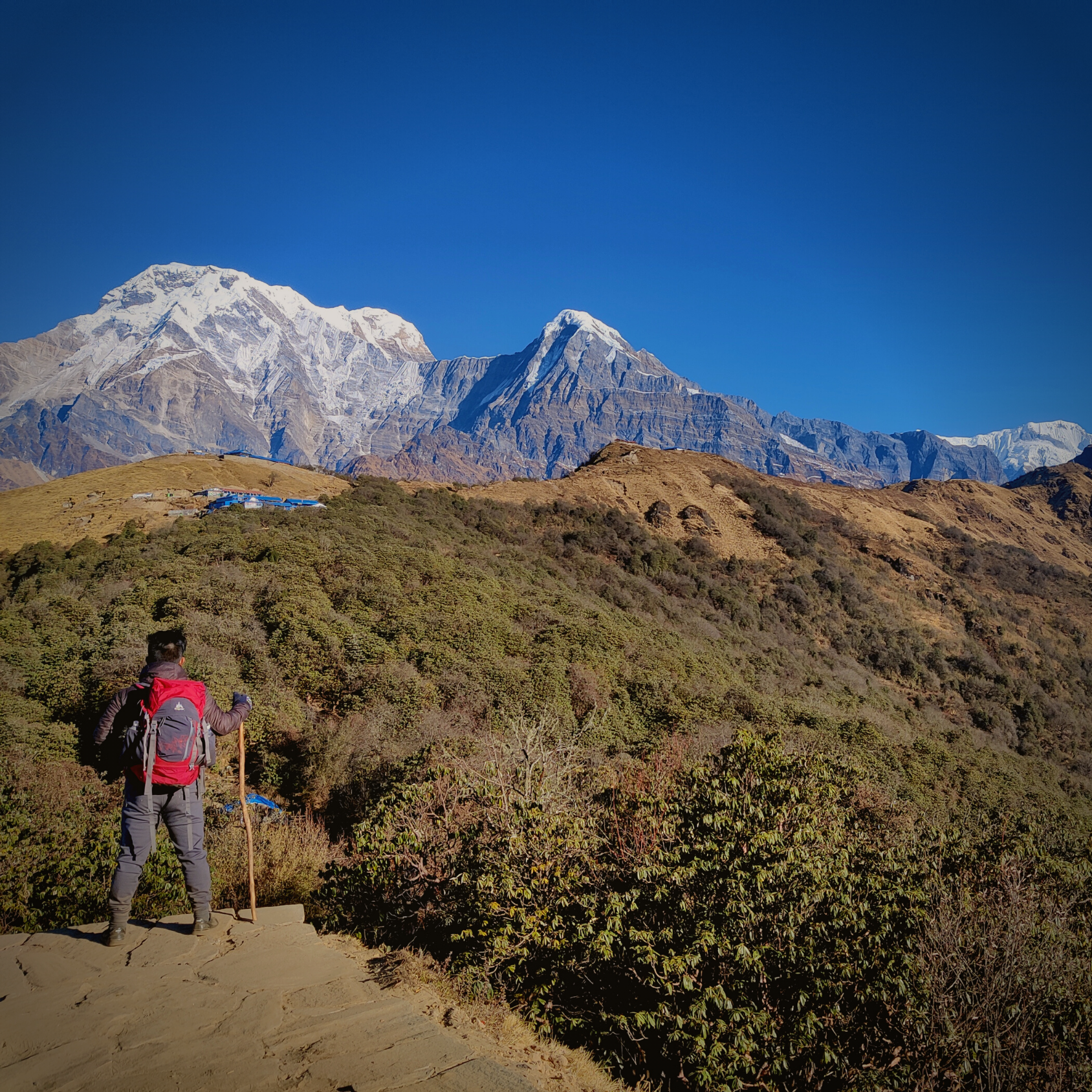Annapurna is a series of peaks in the Himalayas, a 55 km long massif of which the highest point, Annapurna I,stands at 8091m, making it the 10th-highest summit in the world and one of the 14 "eight-thousanders".The Annapurna region is situated in middle north Nepal and is defined by the Kali Gandaki River to the west, the Marsyangdi and Dudh Khola valleys to the east, the Pokhara valley to the south and the Himalaya foothills that run along the Nepal-Tibetan border to the north.
Annapurna is a Sanskrit name which literally means "full of food" (feminine form), but is normally translated as Goddess of the Harvests. In Hinduism, Annapurna is a goddess of fertility and agriculture and an avatar of Durga.The entire massif and surrounding area are protected within the 7,629 km2 Annapurna Conservation Area Project(ACAP), the first and largest conservation area in Nepal, established in 1986 by the King Mahendra Trust for Nature Conservation.Experiencing the ethnic and cultural diversity of the people in this region as you undertake the 3-week, 118 miles Annapurna Circuit. The wide variety of flora and fauna, the ever changing views of the mountains and of course the trekker- friendly climate all make this a truly memorable experience.




